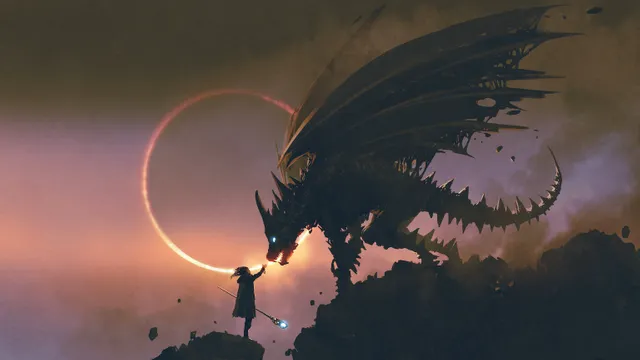
People sometimes look down on fantasy and science fiction, as if reading is a status symbol and these genres are only for children. For J.R.R. Tolkien, fantasy involves a depth of imagination known as "sub-creation." Fantasy and science fiction also reflect a fundamental aspect of the human condition — the struggle to overcome hardships.
People sometimes look down on fantasy — not the prize-winning, metaphorical magical realism kind, but the kind of fantasy that has swords, sorcery, and dragons. It is generally accepted that children can enjoy made-up worlds, magical beasts, and dark lords. But, when we become adults, it seems we ought to turn to “proper” literature — mature, respectable, and written in ornate prose. It’s as if the books we read are a status symbol, and those who read serious books, about serious things, must be serious people. But this misses the point of what fantasy is about, and the totemic father of the genre, J.R.R. Tolkien, has a lot to say on the topic.
Sub-creation
The snobbery of those who look down on fantasy has a long pedigree — so much so that, in 1947, J.R.R. Tolkien felt the need to defend the genre in his work, “On Fairy-Stories.” For Tolkien, fantasy and fairy stories are not simply stories about fairies. They are stories that take place in a land of fairies. They exist in their own created land, where any number of wondrous things can happen, but they are always treated with the utmost seriousness by the reader. To enter Faërie is not to enter a world of simple make-believe; instead, we perform an act of “sub-creation,” in which we form a world within our wider “reality.”
This imaginary world we create always will go beyond the words given to describe it. The fantasy realm “cannot be caught in a net of words; for it is indescribable.” Words alone will never be able to conjure up a fully realized land of magic. For this, we need the ability to sub-create. When we sub-create a world, we “make a Secondary World which the mind can enter.” This world has its own internal logic, laws, and systems. We see, feel, and live in this world in a way far beyond the words on a page can alone provide. We color in background details and add sights, smells, and wonders that go beyond the narrow bounds of the words in the book. It is why movie adaptations can feel so hollow, at times.
If you have read Lord of the Rings, you can understand what Tolkien’s getting at. Middle Earth is built with such a depth and detail that, while sub-creation means time and effort, you feel as if you are in that world. It’s hard to describe. It’s not simply inventing mental images but sub-creating an entire world and living alongside the characters. It means watching the drama, but from the inside.
Fields marked with an * are required
Join our community of more than 10 million lifelong learners and get smarter, faster today.
By providing your email, you agree to the Big Think Privacy Policy.
Smarter Faster Weekly on Thursdays
The most counterintuitive, surprising, and impactful new stories delivered to your inbox every Thursday.
The Well Weekly on Tuesdays
Every Tuesday explore ideas in science and philosophy that inspire a life well lived.
Starts With a Bang Weekly on Saturdays
Travel the universe with Dr. Ethan Siegel every Saturday as he answers, scientifically, the biggest questions of all.
Big Think+ Weekly
Chief Learning Officers and other Learning and Development professionals will enjoy this weekly dose of the latest industry insights and research.